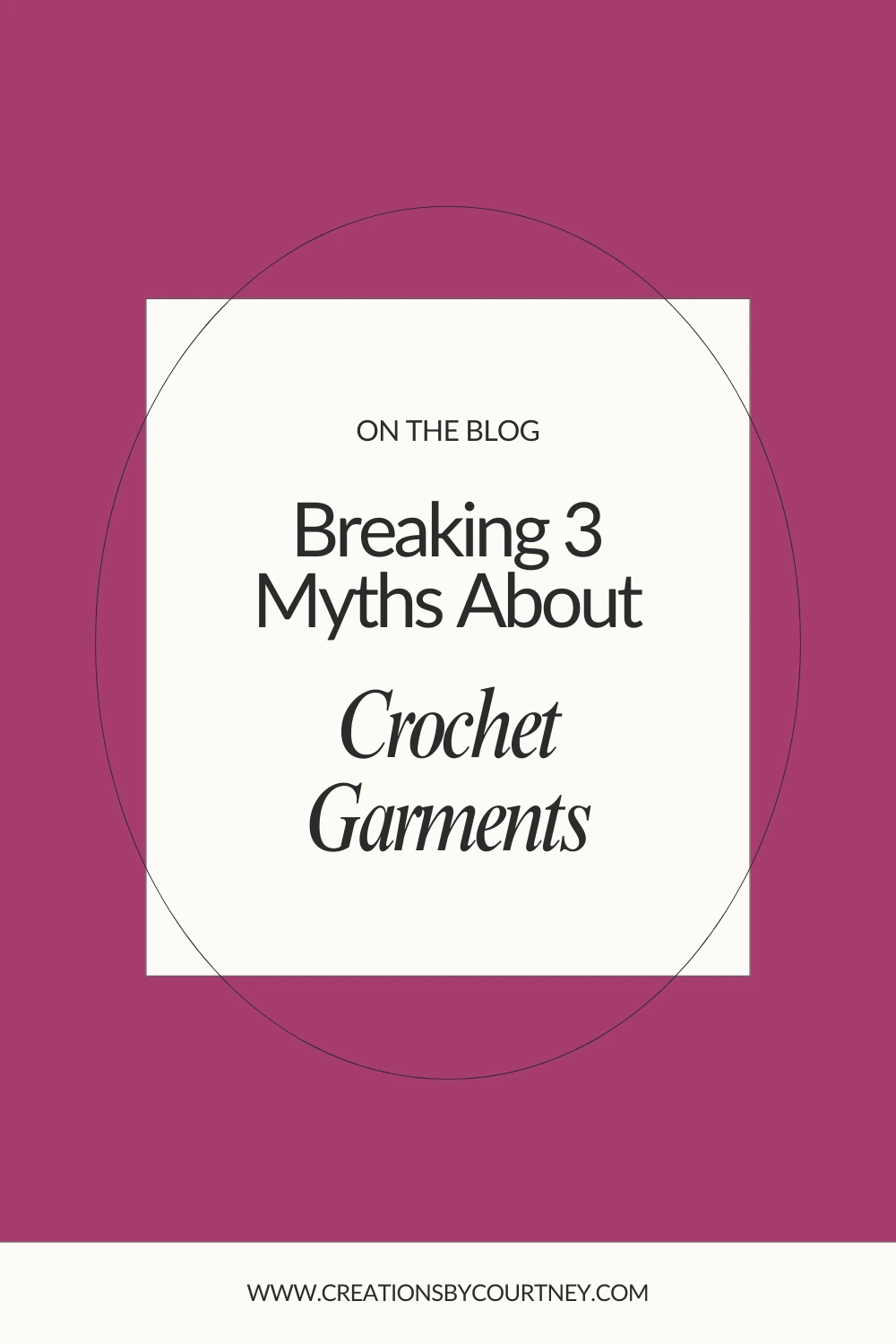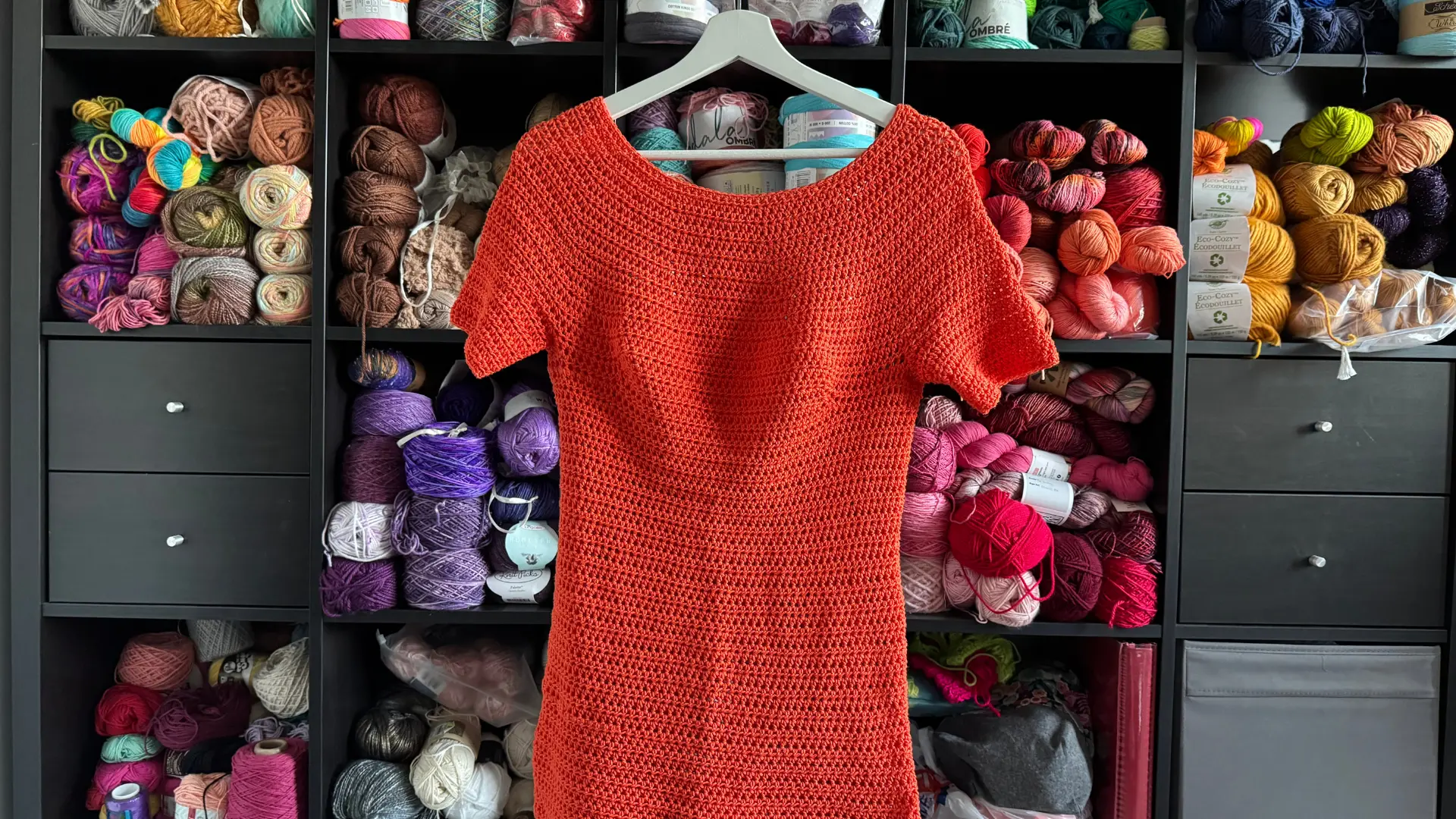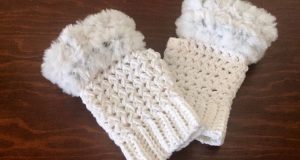Have you ever hesitated to crochet a garment because you thought it would turn out stiff, wouldn’t fit, or (let’s be honest) might look a little too “old school”?
If you nodded yes, don’t worry—you’re not alone! These concerns are some of the biggest reasons crocheters shy away from making wearables. But here’s the thing: crochet garments can be luxurious, stylish, and fit like a dream when you know the secrets behind them.
That’s why today, we’re busting three common myths that hold crocheters back from diving into garment-making. Whether you’re new to wearables or you’ve had a few disappointing attempts, this post will give you the confidence to pick up your hook and create something you’ll actually want to wear.
And if you’re thinking, “This sounds great, but I need more guidance,” don’t worry—I’ve got you covered! At the end of this post, I’ll share more about my upcoming mini-course designed to help you tackle crochet garments with ease, from selecting the right yarn to nailing the perfect fit.
So grab your favorite yarn, settle in, and let’s bust some myths together!
Table of Contents
Myth 1: Crochet Garments Are Stiff
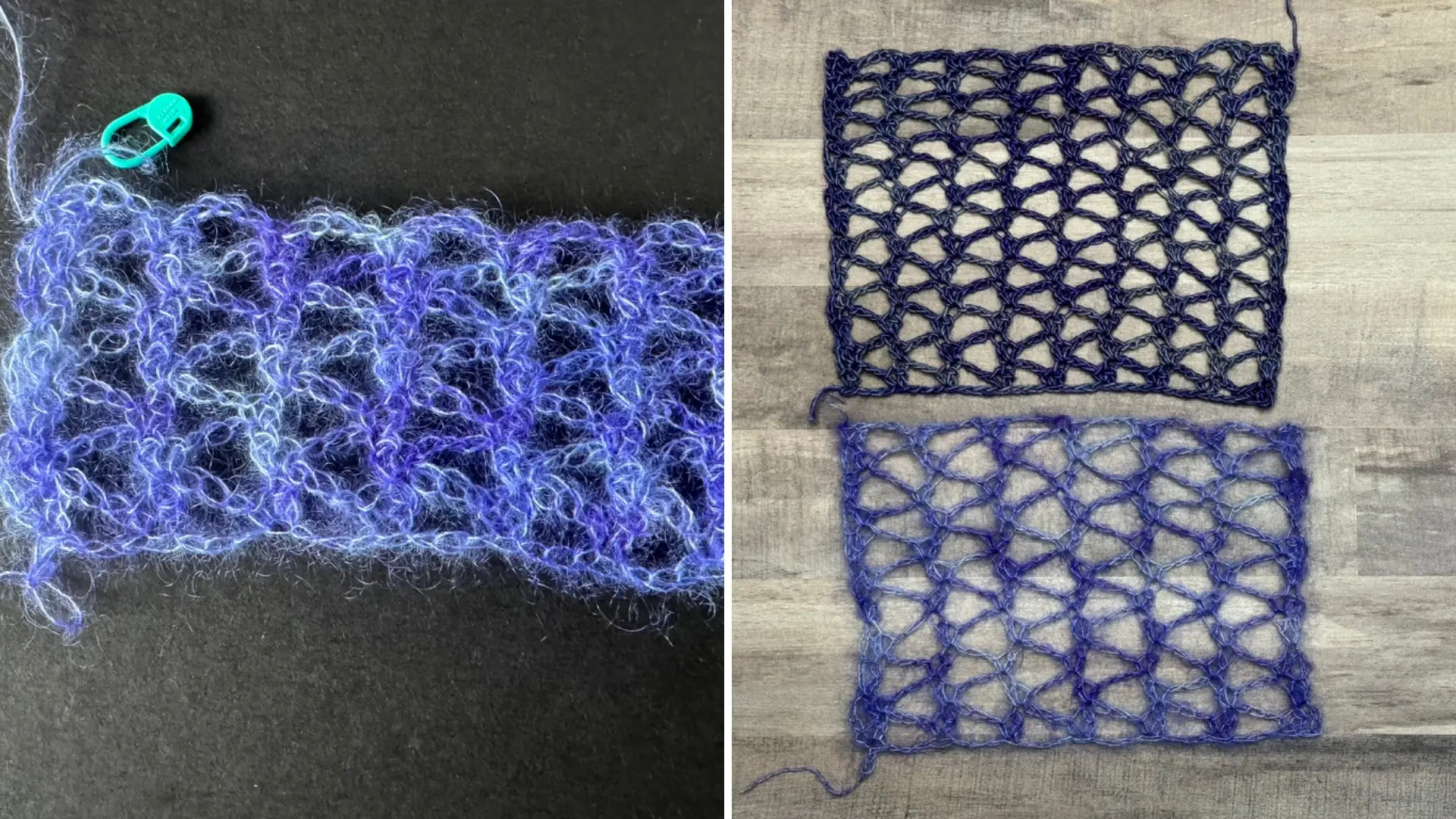
Let’s bust the first (and perhaps the most common) myth: “Crochet garments are stiff.”
Many of us been there—crocheting a garment only to realize it feels more like a rug than something you’d want to wear. But here’s the good news: stiffness isn’t a crochet problem; it’s a fiber and finishing problem!
It All Starts with Fiber Choice
The type of yarn you use makes a huge difference in how your crochet garment feels and moves. For example:
- Cotton yarn tends to have less stretch and drape, making it better for structured designs like crop tops or summer tees.
- Bamboo or silk blends are naturally drapey and soft, perfect for flowy tops or dresses.
- Wool or wool blends strike a balance—they’re warm, stretchy, and versatile, ideal for sweaters and cardigans. Even summer garments… *gasp*
When choosing your yarn, think about the end result you’re aiming for. Do you want a lightweight, breezy feel? Go for a bamboo blend. Need cozy structure? Wool is your best friend.
In case you are allergic to the lanolin in wool, check out this post to learn more about choosing yarn fro crochet garments.
Blocking: The Secret Weapon
Even if you pick the perfect yarn, your garment might still feel stiff—until you block it! Blocking is a game-changer.This process involves wetting or steaming your finished piece to relax the fibers and smooth out stitches.
Here’s what blocking can do:
- Transform stiffness into softness: A tightly crocheted fabric can suddenly drape beautifully after blocking.
- Even out stitches: Any uneven areas disappear, leaving your garment looking polished and professional.
Tip: Always make a swatch first, block it, and see how the fabric changes. You’ll not only get a feel for the drape but also ensure you’re meeting the correct gauge (more on that in Myth 2!).
Swatching to Test Drape
If you’re nervous about how a yarn will behave, take it for a test run! Crochet a small swatch (6″ x 6″ / 15 cm x 15 cm, you’ll need it to check gauge anyways.) in the stitch pattern you’ll be using for your project, then block it. You’ll be amazed at how a yarn that initially feels stiff can relax into something soft and wearable.
Don’t be afraid to make more than one swatch with different crochet hook sizes! A crochet fabric is almost definitely going to be stiff when using a crochet hook that is too small for the thickness of the yarn. This is the goal for amigurumi, but the opposite when making a crochet sweater or beach coverup.
Crochet garments aren’t doomed to stiffness—it’s all about using the right materials, tools and finishing techniques. And once you nail this, you’re one step closer to a wearable masterpiece!
Myth 2: Crochet Garments Won’t Fit
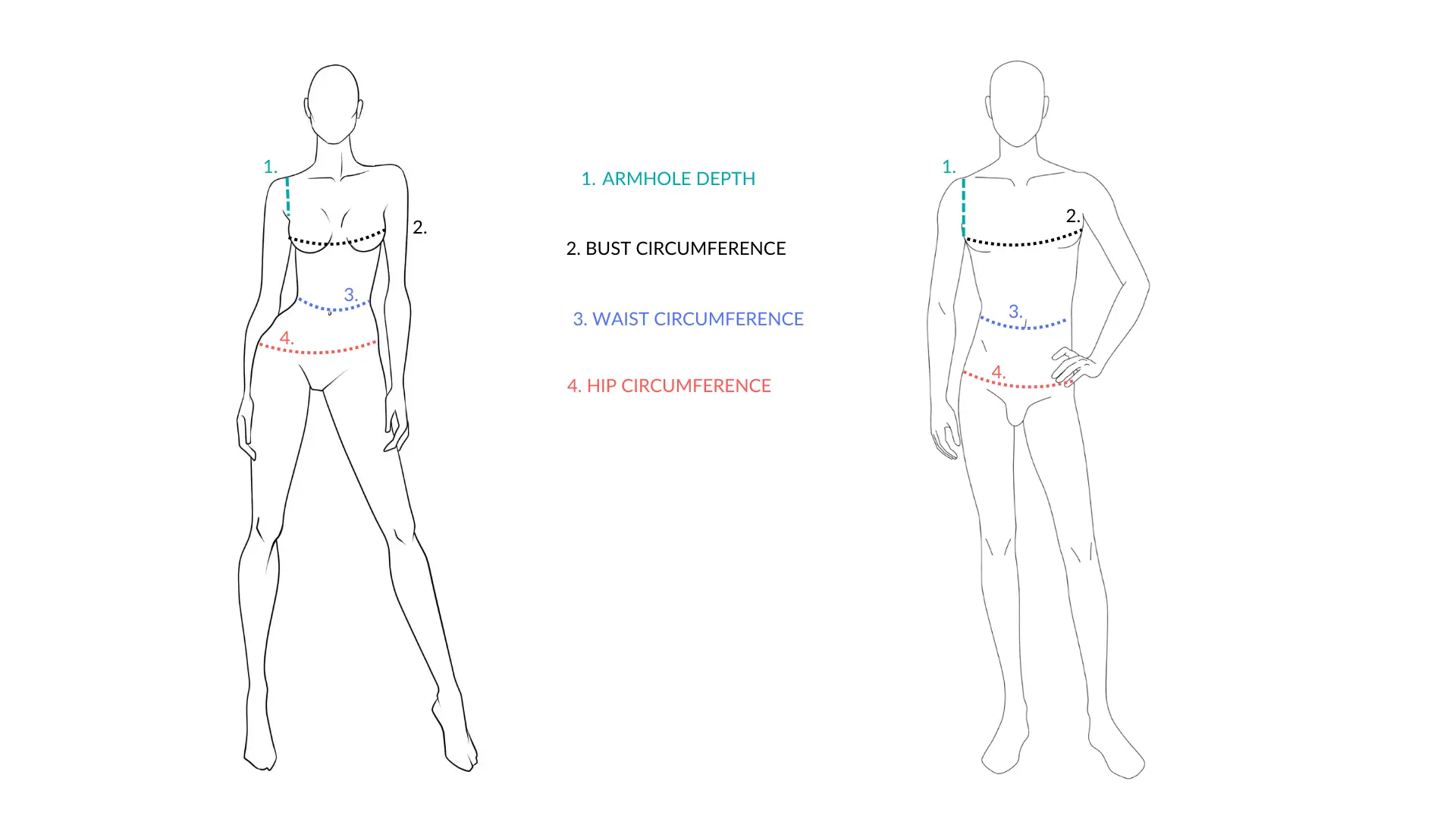
Now let’s tackle a myth that stops so many crocheters from even trying to make wearables: “Crochet garments won’t fit.”
What is that crochet pattern in your library that you instantly fell in love with (beautiful pictures anyone?), but you have never attempted to make it for fear of it being too tight at the bust and arms or too loose in the hips. Here’s the truth: fit isn’t magic; it’s all about math, measurements, and gauge—and they’re easier to master than you might think!
Gauge Is Your Best Friend
When it comes to fit, gauge is the most important step that crocheters often skip (we’ve all been tempted to dive straight in without swatching, right?). But skipping gauge is like baking a cake without measuring the ingredients—it’s a recipe for disaster. And before you scream at me, “Courtney, I know someone that has NEVER made a gauge swatch and their sweaters fit,” you cannot compare someone else’s experience to your own, and let’s build GOOD crochet habits.
Here’s how to check your gauge:
- Crochet a swatch in the stitch pattern used in the design that is larger than the length and width of the gauge, i.e. if a pattern gauge is 12 hdc x 6 rows = 4″ x 4″ , then your swatch should be at least 6″ in width and length.
- Measure how many stitches and rows fit into a 4-inch square or the measurement listed in the pattern.
- Compare this to the gauge listed in the pattern.
If your swatch doesn’t match, don’t panic! Adjust your hook size:
- If your stitches are too small (too many stitches per inch), go up a hook size.
- If your stitches are too big (too few stitches per inch), go down a hook size.
Getting the right gauge ensures your garment will match the designer’s measurements—and it’s a critical step for success.
Take Accurate Measurements
Fit isn’t just about the pattern—it’s also about knowing your body’s measurements. This is especially important for crochet, where stitch sizes can vary more than in knitting.
Here’s a quick guide to the key measurements you’ll need:
- Bust: Measure around the fullest part of your chest.
- Waist: Measure at the narrowest point of your torso.
- Hips: Measure at the widest part of your lower body.
- Armhole Depth: Measure from your shoulder to your armpit to ensure sleeves won’t feel too tight or loose.
DO NOT SELECT A SIZE TO MAKE BASED ON THE SIZE YOU WEAR IN STORE BOUGHT CLOTHING. The measurements vary within fast fashion brands, which means that a size medium at Gap can be different than a size medium crochet top.
Once you have these numbers, compare them to the pattern’s schematic (or create your own drawing of the wearable). It’s all about matching the garment to your shape.
A Mindset Shift: You’re in Control!
Fit is a skill, and like any skill, it gets easier with practice. And here’s some exciting news: I’ll be covering all of this in more detail in my upcoming mini-course! You’ll learn how to measure accurately, calculate adjustments, and even tweak patterns to fit your body perfectly.
So the next time you think, “This garment won’t fit,” remember: you’re not at the mercy of the pattern. With the right tools and techniques, you can make crochet garments that feel tailor-made for you.
Myth 3: Crochet Wearables Look Outdated
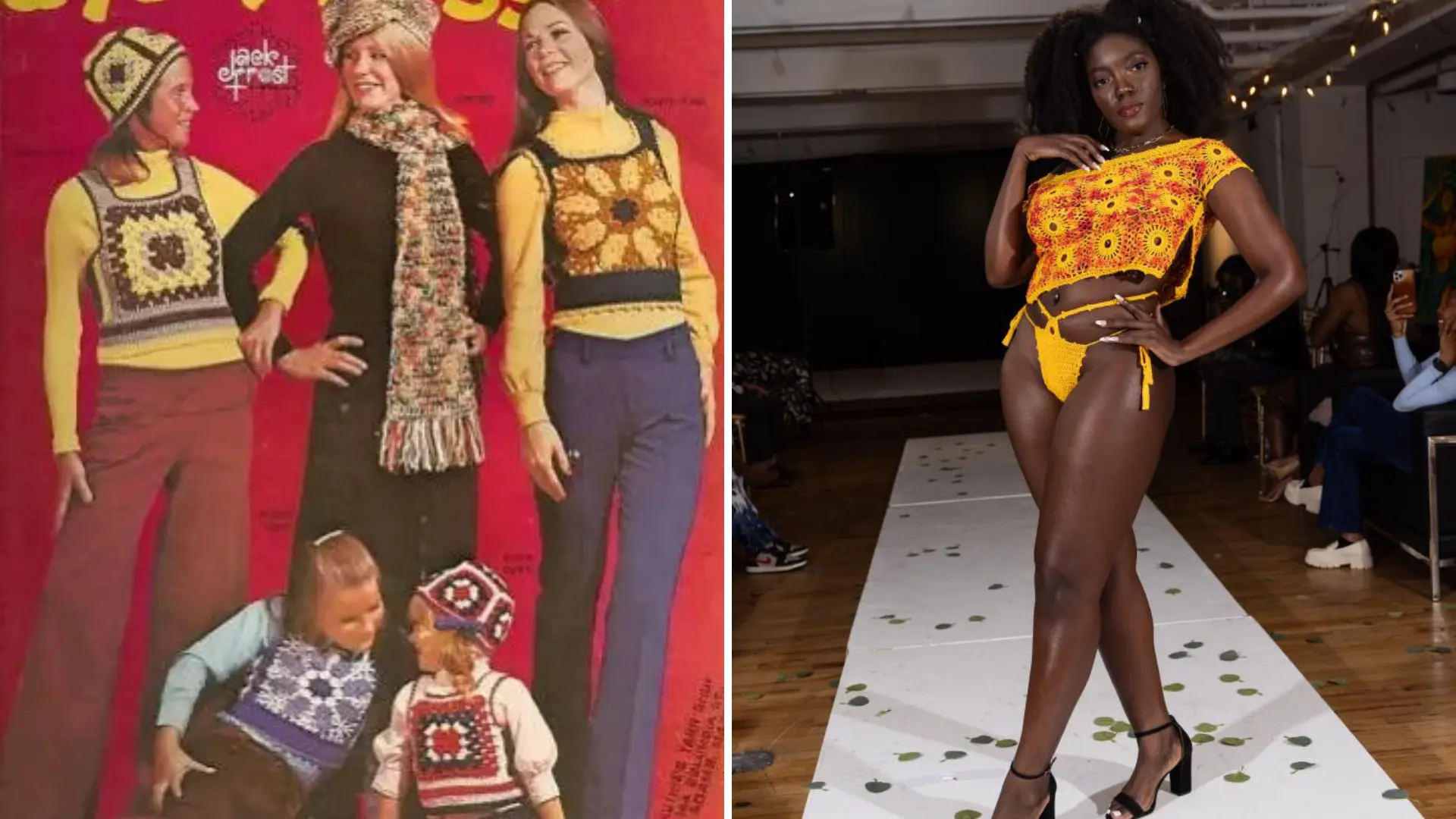
Source: Left image https://www.buzzfeed.com/teamstupidest/the-most-unfortunate-unwearable-and-otherwise-unb-5atw ; Right image @creattieanndesigns
Let’s bust the final myth: “Crochet wearables look outdated.”
If your mind immediately pictures brown and yellow granny square vests from the ’70s or stiff, lacy doilies masquerading as tops, I get it. Crochet wearables have had an unfair reputation for being a little… let’s say “vintage.” But here’s the truth: modern crochet designs are anything but outdated. In fact, with the right stitch patterns, yarns, and colors, crochet wearables can be just as stylish as anything you’d find in a boutique.
Modern Stitch Patterns for a Trendy Look
Gone are the days of plain single crochet and basic granny squares as your only options. Today’s patterns use sophisticated stitches like:
- Post stitches to create texture and dimension.
- Openwork patterns for breathable, lightweight designs.
- Tunisian crochet for a knit-like finish.
These stitches allow for versatility and creativity, transforming simple garments into trendy, fashion-forward pieces.
Customizing Color and Texture
Color is one of the easiest ways to make a crochet garment look modern and stylish. Neutral tones like cream, beige, and charcoal give garments a minimalist vibe, while bold colors or trendy hues like terracotta and sage green make a statement.
And don’t forget about texture! Using yarns with subtle sheen (like bamboo or silk blends) or a soft halo (like mohair) can elevate your design instantly. Pair the right color with the right texture, and your crochet garment will look straight off a runway.
Your Style, Your Way
The beauty of crochet is the ability to make something completely unique. You can:
- Customize the length of a top to suit your personal style.
- Add flare sleeves for a touch of drama.
- Use contrasting color-blocking to make your garment pop.
One of my favorite examples of modern crochet wearables is the Genevieve Crochet Top. This design is a classic fit, comfortable, and perfect for everyday wear—proof that crochet can be both functional and fashionable.
Crochet Is Trending
Thanks to Olympians and mega star artists, crochet is the radar of many that assumed it was an activity for grandmas, but is now popping up in mainstream fashion. Big-name designers and brands are embracing handmade aesthetics, and you can find crochet-inspired pieces on runways, in magazines, and in high-end stores. When you make your own crochet garments, you’re not just creating something stylish—you’re part of a movement celebrating craftsmanship and creativity.
So, the next time someone says that crochet isn’t it and is a hobby for old ladies, just smile. You know the truth: with the right stitches, yarn fiber, colors, and designs, crochet wearables are not only modern and stylish, but also timeless.
Busting Myths, Boosting Confidence
Crochet garments don’t have to be stiff, 20 sizes too big or too small, or look like it leapt from the pages of a 1970’s magazine. With the right tools, techniques, and mindset, they will be stylish, drape beautifully, and fit the way you want.
To recap:
- Myth 1: Choose the right fiber, crochet hook size, and block your project to achieve beautiful drape.
- Myth 2: Use gauge and accurate body measurements to create a garment that fits like a glove.
- Myth 3: Modern stitch patterns, trendy colors, and personal customization make crochet wearables anything but outdated.
Whether you’re a first-timer or you’ve struggled with crochet garments in the past, remember: you can absolutely create something you’ll love to wear.
Take Your Garment-Making to the Next Level!
Feeling inspired to start your next project? You’re just getting started!
👉 Sign up for my email list to get exclusive tips, pattern suggestions, and updates on my upcoming mini-course, where I’ll teach you how to master crochet garments from yarn selection to perfect fit.
✨ Ready to feel confident in your crochet skills? Join a community of makers just like you and unlock the joy of crafting garments you’ll actually want to wear.
👋 Would you like to discover the secrets within gauge and how to create your own simple crochet garments that FIT, and not waste time nor yarn?
If you said, “YES, please!,” or “maybe,” CLICK HERE to join the waitlist for the mini-course, From Stitch to Style.
Pin it
